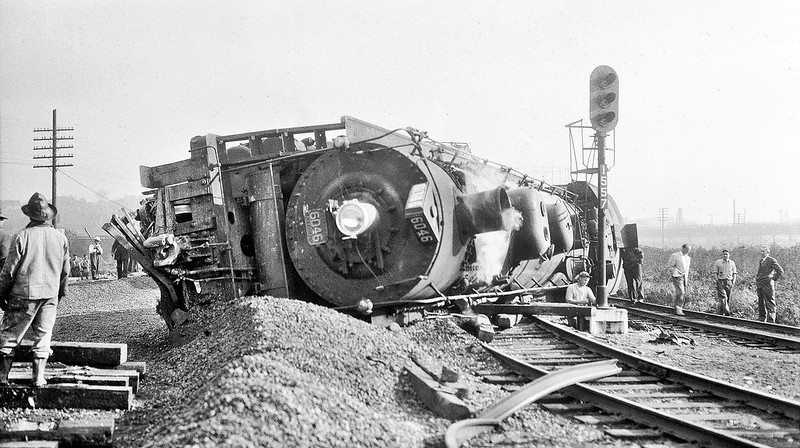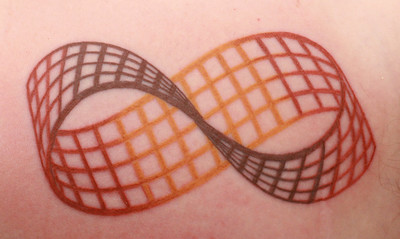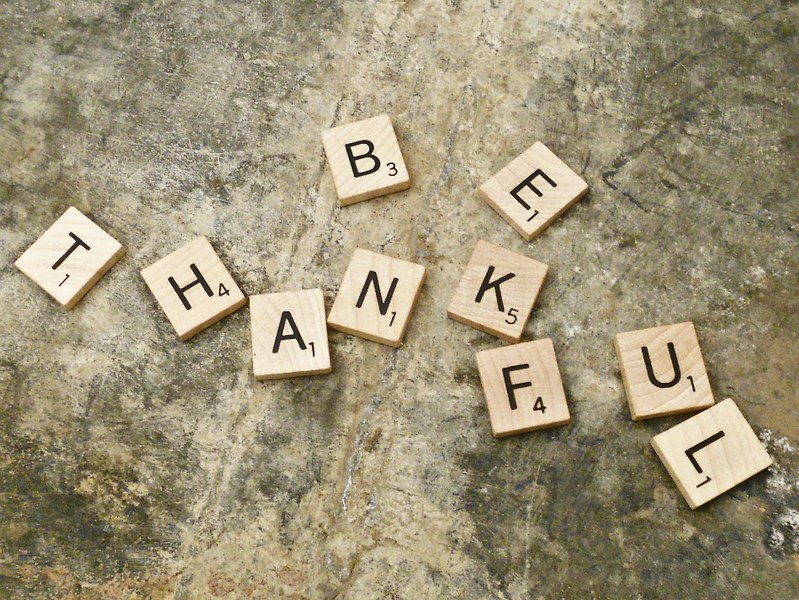Improvement In Reverse Sequence
 Before you can make improvements, you must identify improvement opportunities.
Before you can make improvements, you must identify improvement opportunities.
Before you can identify improvement opportunities, you must look for them.
Before you can look for improvement opportunities, you must believe improvement is possible.
Before believing improvement is possible, you must admit there’s a need for improvement.
Before you can admit the need for improvement, you must recognize the need for improvement.
Before you can recognize the need for improvement, you must feel dissatisfied with how things are.
Before you can feel dissatisfied with how things are, you must compare how things are for you relative to how things are for others (e.g., competitors, coworkers).
Before you can compare things for yourself relative to others, you must be aware of how things are for others and how they are for you.
Before you can be aware of how things are, you must be calm, curious, and mindful.
Before you can be calm, curious, and mindful, you must be well-rested and well-fed. And you must feel safe.
What choices do you make to be well-rested? How do you feel about that?
What choices do you make to be well-fed? How do you feel about that?
What choices do you make to feel safe? How do you feel about that?
Image credit — Philip McErlean
How To Make Progress
 Improvement is progress. Improvement is always measured against a baseline, so the first thing to do is to establish the baseline, the thing you make today, the thing you want to improve. Create an environment to test what you make today, create the test fixtures, define the inputs, create the measurement systems, and write a formal test protocol. Now you have what it takes to quantify an improvement objectively. Test the existing product to define the baseline. No, you haven’t improved anything, but you’ve done the right first thing.
Improvement is progress. Improvement is always measured against a baseline, so the first thing to do is to establish the baseline, the thing you make today, the thing you want to improve. Create an environment to test what you make today, create the test fixtures, define the inputs, create the measurement systems, and write a formal test protocol. Now you have what it takes to quantify an improvement objectively. Test the existing product to define the baseline. No, you haven’t improved anything, but you’ve done the right first thing.
Improving the right thing to make progress. If the problem invalidates the business model, stop what you’re doing and solve it right away because you don’t have a business if you don’t solve it. Any other activity isn’t progress, it’s dilution. Say no to everything else and solve it. This is how rapid progress is made. If the customer won’t buy the product if the problem isn’t solved, solve it. Don’t argue about priorities, don’t use shared resources, don’t try to be efficient. Be effective. Do one thing. Solve it. This type of discipline reduces time to market. No surprises here.
Avoiding improvement of the wrong thing to make progress. For lesser problems, declare them nuisances and permit yourself to solve them later. Nuisances don’t have to be solved immediately (if at all) so you can double down on the most important problems (speed, speed, speed). Demoting problems to nuisances is probably the most effective way to accelerate progress. Deciding what you won’t do frees up resources and emotional bandwidth to make rapid progress on things that matter.
Work the critical path to make progress. Know what work is on the critical path and what is not. For work on the critical path, add resources. Pull resources from non-critical path work and add them to the critical path until adding more slows things down.
Eliminate waiting to make progress. There can be no progress while you wait. Wait for a tool, no progress. Wait for a part from a supplier, no progress. Wait for raw material, no progress. Wait for a shared resource, no progress. Buy the right tools and keep them at the workstations to make progress. Pay the supplier for priority service levels to make progress. Buy inventory of raw materials to make progress. Ensure shared resources are wildly underutilized so they’re available to make progress whenever you need to. Think fire stations, fire trucks, and firefighters.
Help the team make progress. As a leader, jump right in and help the team know what progress looks like. Praise the crudeness of their prototypes to help them make them cruder (and faster) next time. Give them permission to make assumptions and use their judgment because that’s where speed comes from. And when you see “activity” call it by name so they can recognize it for themselves, and teach them how to turn their effort into progress.
Be relentless and respectful to make progress. Apply constant pressure, but make it sustainable and fun.
Image credit — Clint Mason
It’s not about failing fast; it’s about learning fast.

No one has ever been promoted by failing fast. They may have been promoted because they learned something important from an experiment that delivered unexpected results, but that’s fundamentally different than failure. That’s learning.
Failure, as a word, has the strongest negative connotations. Close your eyes and imagine a failure. Can you imagine a scenario where someone gets praised or promoted for that failure? I think not. It’s bad when you fail to qualify for a race. It’s bad when you fail to get that new job. It’s bad when driving down the highway the transmission fails fast. If you squint, sometimes you can see a twinkle of goodness in failure, but it’s still more than 99% bad.
When it’s bad for people’s careers, they don’t do it. Failure is like that. If you want to motivate people or instill a new behavior, I suggest you choose a word other than failure.
Learning, as a word, has highly positive connotations. Children go to school to learn, and that’s good. People go to college to learn, and that’s good. When people learn new things they can do new things, and that’s good. Learning is the foundation for growth and development, and that’s good.
Learning can look like failure to the untrained eye. The prototype blew up – FAILURE. We thought the prototype would survive the test, but it didn’t. We ran a good test, learned the weakest element, and we’re improving it now – LEARNING. In both cases, the prototype is a complete wreck, but in the FAILURE scenario, the team is afraid to talk about it, and in the LEARNING scenario they brag. In the LEARNING scenario, each team member stands two inches taller.
Learning yes; failure no.
The transition from failure to learning starts with a question: What did you learn? It’s a magic question that helps the team see the progress instead of the shattered remains. It helps them see that their hard work has made them smarter. After several what-did-you-learns, the team will start to see what they learned. Without your prompts, they’ll know what they learned. Then, they’ll design their work around their desired learning. Then they’ll define formal learning objectives (LOs). Then they’ll figure out how to improve their learning rate. And then they’re off to the races.
You don’t break things for the sake of breaking them. You break things so you can learn.
Learning yes; failure no. Because language matters.
Image credit — mining camper
Happy, Lonely, Sad, Angry
 Happy – when you can bring your whole self to everything you do.
Happy – when you can bring your whole self to everything you do.
Lonely – when you’re with people all day but can’t be truthful with them.
Sad – when you see what could be but never will.
Angry – when someone is less than truthful.
Happy – when people you care about are treated well.
Lonely – when you’re misunderstood.
Sad – when you realize a person’s lack of truthfulness will make them lonely.
Angry – when you take things personally that aren’t personal.
Happy – when an old friend visits.
Lonely – when there’s no trust.
Sad – when you see someone break trust and you know that will bring them loneliness.
Angry – when you know someone should know better.
Happy – when someone asks you for help.
Lonely – when you know you can help but they don’t ask.
Sad – when someone is set up for failure and there’s no way to help them.
Angry – when that someone is a good friend.
Happy – when you have your health.
Happy – when you have fun with friends.
Happy – when you spend time outside.
Happy – when you walk your dogs.
Happy – when your kids and your partner love you.
Whether you’re happy, lonely, sad, or angry, this too shall pass.
Image credit – Tambako the Jaguar.
Time Travel Back to the Present
 If you don’t like what happened, now is the time to let it go.
If you don’t like what happened, now is the time to let it go.
If it already happened, it cannot be undone. Time travel is not yet possible. Let it go.
If you spend your energy complaining about the past, you won’t have enough for right now.
If you had no control over the outcome, what does it say if you beat yourself up about the outcome?
It’s not just uranium that has a half-life. Everything does. And so do you.
When you hold tightly to how things are, you get rope burns.
When you no longer have what you had, you can finally appreciate it for what it was.
An unplanned kick in the pants can help you jumpstart a new S-curve when you see it that way.
If you worry about what will happen, don’t. It hasn’t happened and likely won’t.
If you spend your energy worrying about the future, you won’t have enough for right now.
If you try to predict the consequences of bad fortune, you can’t. And it’s the same for good fortune.
Direct linear causality isn’t a thing when it comes to people systems. Propensity, yes. Causality, no.
How it will turn out has nothing to do with how you think it will turn out.
Trying to achieve the ideal future state is a waste of time. There’s no way to know what the Universe thinks is ideal.
The future is uncertain and there’s nothing you can do about it. You might as well not worry about it.
Who is standing in front of you? What if you spent all your energy with them right now? I bet they’d notice.
Who is sitting next to you? What if you treated them like they were the most important thing in your life right now? I bet they’d remember that experience.
What are you doing right now? Wouldn’t it be soothing to put all your energy into that task? Wouldn’t it be helpful to leave the rest for another time? Why not give it a go?
Wouldn’t it be pleasant to put all your energy into doing one thing in a row? Why not try it?
What if you put all your energy into doing the next right thing? Wouldn’t that eliminate some of your stress? Why not test it out?
How would it feel to be here now? Why not give it a try?
Image credit — Bobby Magee
Top Blog Posts of 2024
 Here are the top four blog posts from 2024 with a little summary of each.
Here are the top four blog posts from 2024 with a little summary of each.
It’s not the work, it’s the people. By far the most popular post. Here are some important words from the post: hard work, share, struggle, elbow-to-elbow, fear, crew, extra load, friend, through the wringer, smile, sad, care, easier. And I finished with a challenge.
For the most important people, take a minute and write down your shared experiences and what they mean to you. What would it mean to them if you shared your thoughts and feelings? Why not take a minute and find out? Wouldn’t work be more energizing and fun? If you agree, why not do it? What’s in the way? What’s stopping you?
Why not push through the discomfort and take things to the next level?
Projects, Products, People, and Problems. The post was written within the tight context of product development systems, but I think the tight one-liners have broader applicability. Here are a few of may favorites.
- To get more projects done, do fewer of them.
- Stop starting and start finishing.
- People grow when you create the conditions for their growth.
- When in doubt, help people.
- Trust is all-powerful.
- Whatever business you’re in, you’re in the people business.
Pro Tips for New Product Development Projects. This one was one was narrow and deep. Here are the main themes:
- Effectiveness is more important than efficiency, but we behave otherwise.
- Everyone has too many projects and that’s why they take so long.
- Resources – too highly utilized.
- Novelty – too much of a good thing isn’t wonderful.
I’m thankful! I wrote this for the Thanksgiving holiday. There were four themes: family, health, time, and telling people about your thankfulness. Family – straightforward. Health – appreciating our remaining health because we recognize it flowing away. This one is a little backward, but the Stoics know. And so does Buddha. Time – appreciation of our time, especially when others pull on us. Telling people about our thankfulness – this a great way to multiply the impact of our thankfulness.
Happy New Year and thanks for reading, Mike
Image credit — Anna Sofia Guerreirinho
Holidays are special because family is special.
 Holidays aren’t about shopping, gifts, special dinners, or travel. Holidays are about family.
Holidays aren’t about shopping, gifts, special dinners, or travel. Holidays are about family.
On holidays, people travel. They don’t travel to tourist sites, national parks, or big cities for big cities’ stake. People travel to see their families.
On holidays, people eat special foods prepared in special ways and served on special plates. But that’s not special. Family prepares the food, family sits at the table, and family eats the food. What’s special is family.
Oh holidays, people tell the same stories of old shared experiences. Everyone knows all the stories, but they’re still told every year. Sure, the stories are misremembered, but the storyline holds. The family’s shared experiences are reexperienced and relationships deepen. Family is special because it helps us remember and grounds us.
On holidays, people don’t always get along. Some of the same arguments arise and some new ones are born. Tempers flare and then cool. Because of the significant body of shared experiences and shared memories, there are more opportunities to disagree. And because family creates a safe space, sharing strong feelings is okay. It’s easy to see (and hear) the arguments and it isn’t easy to see what makes them possible – shared context, shared memories, and a safe space built on trust. Without these regular arguments cannot rise to the level of family arguments. Family arguments are a higher genus of arguments; they are noble arguments. Family arguments can realized only by families.
I hope you can spend the holidays with your family. If not, I hope you can have a great video call with them, have a meaningful phone call with them, or even a funny text exchange. And if you can’t, I hope you can spend time with good friends who are like family.
Image credit – Craig Sefton
What do you choose to be?

Be bold – the alternative is boring.
Be the first to forgive – it’s like forgiving twice.
Be yourself – you’re the best at that.
Be afraid – and do it anyway.
Be effective – and to hell with efficiency.
Be happy – if that’s what’s inside.
Be authentic – it’s invigorating.
Be energetic – it’s contagious.
Be a listener – that’s where learning comes from.
Be on time – it says you care.
Be early if you can’t be on time – but just a little.
Be courageous – but sparingly.
Be kind – people remember.
Be truthful – that’s how trust is built.
Be a learner – by learning to listen.
Be sad – if that’s what’s inside.
Be a friend – it’s good for them and better for you.
Be nobody – it’s better for everybody, even you.
Image credit — Irene Steeves
What It Means To Stand Tall
 People try to diminish when they’re threatened.
People try to diminish when they’re threatened.
People are threatened when they think you’re more capable than they are.
When they think less of themselves, they see you as more capable.
There you have it.
When someone doesn’t do what they say and you bring it up to them, there are two general responses. If they forget, they tell you and apologize. If they don’t have a good reason, they respond defensively.
When someone responds defensively, it means they know what they did.
They respond defensively when they know what they did and don’t like what it says about them.
Defensiveness is an admission of guilt.
Defensiveness is an acknowledgment that the ego was bruised.
Defensiveness is a declaration self-worth is insufficient.
People can either stand down or turn it up when defensiveness is called by name.
When people stand down, they demonstrate they have what it takes to own their behavior.
When they turn it up, they don’t.
When people turn their defensiveness into aggressiveness, they’re unwilling to own their behavior because doing so violates their self-image. And that’s why they’re willing to blame you for their behavior.
When you tell someone they didn’t do what they said and they acknowledge their behavior, praise them. Tell them they displayed courage. Thank them.
When you call someone on their defensiveness and they own their behavior, compliment them for their truthfulness. Tell them their truthfulness is a compliment to you. Tell them their truthfulness means you are important to them.
When you call someone on their defensiveness and they respond aggressively, stand tall. Recognize they are threatened and stand tall. Recognize they don’t like what they did and they don’t have what it takes (in the moment) to own their behavior. And stand tall. When they try to blame you, tell them you did nothing wrong. Tell them it’s not okay to try to blame you for their behavior. And stand tall.
It’s not your responsibility to teach them or help them change their behavior. But it is your responsibility to stay in control, to be professional, and to protect yourself.
When you stand tall, it means you know what they’re doing. When you stand tall, it means it’s not okay to behave that way. When you stand tall, it means you are comfortable describing their behavior to those who can do something about it. When you continue to stand tall, you make it clear there is nothing they can do to prevent you from standing tall.
In the future, they may behave defensively and aggressively with others, but they won’t behave that way with you. And maybe that will help others stand tall.
Image credit — Johan Wieland
Wanting What You Have
 If you got what you wanted, what would you do?
If you got what you wanted, what would you do?
Would you be happy or would you want something else?
Wanting doesn’t have a half-life. Regardless of how much we have, wanting is always right there with us lurking in the background.
Getting what you want has a half-life. After you get what you want, your happiness decays until what you just got becomes what you always had. I think they call that hedonistic adaptation.
When you have what you always had, you have two options. You can want more or you can want what you have. Which will you choose?
When you get what you want, you become afraid to lose what you got. There’s no free lunch with getting what you want.
When you want more, I can manipulate you. I wouldn’t do that, but I could.
When you want more your mind lives in the future where it tries to get what you want. And lives in the past where it mourns what you did not get or lost.
It’s easier to live in the present moment when you want what you have. There’s no need to craft a plan to get more and no need to lament what you didn’t have.
You can tell when a person wants what they have. They are kind because there’s no need to be otherwise. They are calm because things are good. And they are themselves because they don’t need anything from anyone.
Wanting what you have is straightforward. Whatever you have, you decide that’s what you want. It’s much different than having what you want. Once you have what you want hedonistic adaptation makes you want more, and then it’s time to jump back on the hamster wheel.
Wanting what you have is freeing. Why not choose to be free and choose to want what you have?
Image credit — Steven Guzzardi
I’m Thankful!
 How often do you stop what you’re doing, calm yourself, quiet your mind, and think about what you’re thankful for?
How often do you stop what you’re doing, calm yourself, quiet your mind, and think about what you’re thankful for?
To me, thankfulness is about what I have. I have a family I love and they love me, and for that I am thankful. First and foremost, front and center, family is the first thing that comes to me when I think about what I have. I’m thankful for my family.
I also have my health, and I am thankful for it. Funnily, as I get older and recognize my body is changing, it helps me appreciate the health I still have. Sometimes I get frustrated because I can’t do everything I used to do, but I can still do a lot. And most of the time I’m thankful for the health I have.
I am thankful for the time I have. With the kids no longer in the house, I have more quiet time which I value. I appreciate my quiet time more after something comes up and I don’t have as much as I’d like. Sometimes I complain when things come up and I have less quiet time, but I have nothing to complain about because I have enough. After I get over myself, I am more thankful for my quiet time. And, secretly, I wish the kids were back in the house and I had less quiet time. Don’t tell anyone.
I’ve found that my thankfulness is amplified when I tell people about it. When I tell people I’m thankful for their friendship, I’m doubly thankful – once because I remind myself and once because my thankfulness is appreciated. The same thing goes when I tell someone I’m thankful for something they did.
Why not stop what you’re doing, calm yourself, quiet your mind, and think about what you’re thankful for? And why not double the fun and tell someone about it?
You can generate as much thankfulness as you want. And if you give it away, you can always make more. So why not give away some thankfulness to someone you are thankful for? And why not make more and do it again?
Happy Thanksgiving and thanks for reading.
Mike
Image credit — Cindi Albright
 Mike Shipulski
Mike Shipulski